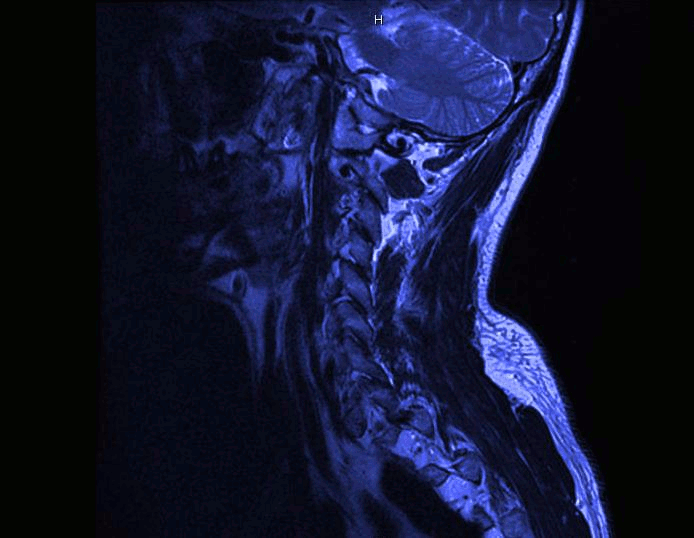Syringomyelia

The terms “Syringomyelia” refers to when a watery fluid builds up in the spinal cord.
The cord is normally a solid structure, about the diameter of your little finger.
In Syringomyelia, it is no longer solid because it has become filled with this water fluid, along part of its length at least.
The fluid forms a cyst-like cavity, which can be large or small: sometimes it is little more than a spindle-shaped structure but in other case it can extend throughout the length of the cord.
The fluid in a syringomyelia cavity is identical to CerebroSpinal Fluid (CSF).
So, what causes CSF to start building up inside what inside what should be a solid structure?
We don’t know the full story, but in most cases there is some form of blockage to the normal CSF flow, up and down the spinal canal, on the outside of the cord. When CSF cannot flow along these normal channels, it begins to build up in the cord itself. A variety of conditions can block normal CSF movement; the most common cause, is a hindbrain hernia (Chiari Malformation), which blocks CSF flow right at the top of the spinal canal, at the craniovertebral junction.
Further details by log into Reserved Area (click here to register).

Text based on “Syringomyelia &Hindbrain Hernia”
(Chiari Malformation) by Graham Flint, The Ann Conroy Trust, 2006
Critical review by Dr. Palma Ciaramitaro



